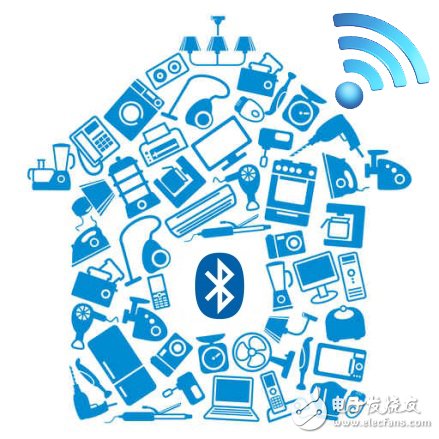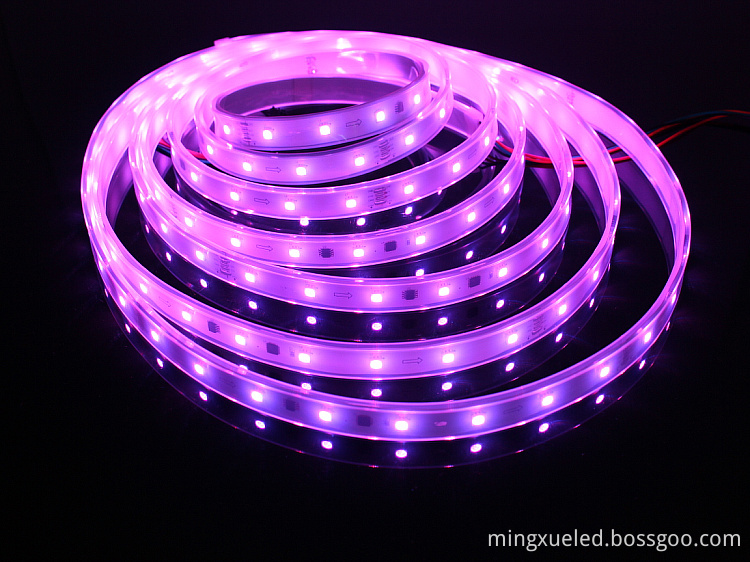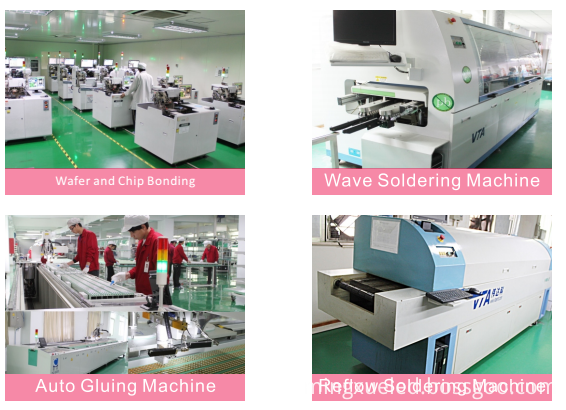At the time of the release of the Bluetooth® 4.0 specification in 2010, Bluetooth Smart Technology came into being – the fastest-growing wireless technology ever made. Bluetooth smart technology has two special features: ultra-low power consumption and the ability to connect devices directly to local applications on mobile phones, tablets and PCs. This smart, energy-efficient version of the Bluetooth technology makes a large number of new 'smart accessories' possible, making the device more compact, allowing a long battery to run for a long time and sending data to the application, thereby Convert to information that is useful to end users. The function of obtaining information makes the connected devices intelligent.
At present, all major smartphone operating systems can provide native support for Bluetooth smart technology. As seen here, the Bluetooth standard will continue to develop rapidly. According to ABI Reseach, in 2011, the output of Bluetooth smart-ready devices was 341 million pieces, and by 2018, the annual output of equipment will reach 2.7 billion pieces. Bluetooth technology has raised the wave of “My Internet of Things†by itself, and mature OEMs and start-ups have introduced weekly activities such as activity monitors and smart watches and hundreds of other devices to the market.

In order to continue to support the development of Bluetooth smart technology, making it the core driving force for my Internet of Things, and ultimately the development of the Internet of Everything, we launched Bluetooth version 4.1 at the end of last year. This update is a very important advancement in the history of Bluetooth technology. For the developer community, this update gives them greater flexibility and greater control to help them create more innovative and intuitive products. To support the development of the Internet of Things.
Bluetooth version 4.1 has extended the Bluetooth brand promise to focus on providing consumers with a "normal operation" simple experience. In view of this, the most important design of this specification is to improve consumer usability. One problem we need to solve is the coexistence of Bluetooth technology and LTE technology. In the coming year, LTE is expected to cover high-end and low-end smartphones. Consumers are increasingly inclined to connect multiple smart accessories to the hub at the same time. Bluetooth devices have a transmission bandwidth of 2.45 GHz, and LTE usually runs at or around the same frequency. As the use of LTE and Bluetooth smart technologies increases, we are concerned that consumers using these two technologies on the same device will cause more disruption to the experience. The update of version 4.1 enables Bluetooth devices and LTE to communicate cooperatively, reducing the possibility of near-band interference between the two channels, thus not making this problem a consumer problem. These two channels can be implemented automatically and perform at their best, which is undoubtedly crucial for the launch of more LTE handsets this year.
Channel interference is not the only trouble users have faced in the past. Every time you need to re-establish a Bluetooth connection, users need to initiate pairing to establish a connection. Pairing can also cause additional losses in battery life. With version 4.1, developers can set flexible and reconnect time intervals and have more control over creating and maintaining Bluetooth connectivity. The developer can increase the interval between connected advertisements, and the advertiser can choose to transmit an ADV_DIRECT_IND advertisement packet on each enabled advertisement channel at a settable advertisement interval. When the devices are separated, the user will no longer experience a random disconnection of the connection, which reduces power consumption and at the same time improves end user availability.
Energy-saving technology is the core of Bluetooth smart technology. Naturally, while improving the user experience, the 4.1 version focuses on finding new ways to save energy. Since wearable technology is becoming more and more popular among users, it is important that version 4.1 can handle the ensuing increase in data transmission. Based on the Logical Link Control and Adaptation Protocol (L2CAP) mechanism, the core support currently provided in version 4.1 improves the efficiency of bulk or block data transfers (data payloads up to 64 Kbytes) while minimizing the gap between two Bluetooth smart devices Load; therefore, in the past, intermittent update data of the device caused power loss, and now the sensor collects data during running, cycling or swimming, allowing users to transfer and update data more efficiently after returning home.
While energy efficiency is critical, Bluetooth Smart technology also focuses on smart connectivity, which facilitates direct data transfer between devices and applications, providing useful information to end users. One of the most important updates to Bluetooth 4.1 support for energy and IoT development is that devices using version 4.1 can now serve as both hub and terminal devices. By avoiding the need for host devices, peripheral sensors can communicate independently of each other and begin building their own networks before passing all the data they have organized to another location. With dual-mode topology and link-layer topology software capabilities, devices can operate in multiple modes simultaneously and communicate via Bluetooth Smart technology.
All of these features help enable and enhance the Internet of Things, creating new opportunities for application developers. For example, a Bluetooth smart watch can now collect data while the user is swimming or running out. This data is then automatically transferred to the smartphone when the user returns home. The watch can also act as a hub device for information exchange with multiple other wearable devices that collect different data. Once home, this data is collected and aggregated from all devices, then transferred and recorded to the smartphone for users to analyze and track changes in health. For application developers, version 4.1 means greater flexibility in creating innovative products that support multiple roles; this update is especially useful when wearable technology is maturing and sensor-dependent.
The fact that all of these benefits are supported is that with Bluetooth version 4.1, developers no longer need to connect to the Internet using a gateway device. Bluetooth version 4.1 lays the foundation for future IP connectivity, enabling IPv6 devices to establish proprietary communication channels. Launched in 2012, IPv6 paved the way for a connected world in the future. These updates increase the likelihood of Bluetooth smart sensors adopting IPv6, providing developers and OEMs with the flexibility needed to ensure continuous connectivity and compatibility. The desire to realize the connection of all things at any time has made the concept of the Internet of Things rapidly evolve into the "Internet of Everything". In view of the rapid adoption of Bluetooth smart technology and the new IP connectivity, all these indications indicate that Bluetooth Smart Technology is an important wireless connection method for realizing the Internet of Everything.
The market has quickly transitioned from being satisfied with one-to-one device connectivity to requiring one-to-many device connectivity. The Internet of Things has been established and these updates made by Bluetooth version 4.1 will support its development. As the situation continues to change and usher in a new era – whether it's smarter fitness tracking devices or automatic home lighting, Bluetooth technology will continue to be the technology of choice.
——This article is selected from the Electronic Thephile Network April “Internet of Things Technology Special Issue†Change The World column, please indicate the source, please do it!
SMD 3528 LED Strip Light is LED lamp as a light source to FPC board as the carrier circuit in series with the appropriate current limiting resistor design and production of decorative lighting. With high brightness, soft, flexible, you may need to cut to length and so on.
SMD3528 Led Strip Light of the light source LED3528 lights. SMD chip type genus, the carrier is a soft FPC board. That flexible circuit boards, most of the width of 8MM, thickness of less than 1MM. Each FPC factory length of 0.5 meters. Can be two or several mutually welded. Produce a good SMD 3528 LED strip light of the length of the factory 5M roll, anti-static disc and anti-static bag, portable and easy to transport.


SMD 3528 LED strip light can be classified from the following aspects:
1. Color: FPC main color yellow board, whiteboard, blackboard, can be customized. SMD 3528 LED strip light luminous colors: white, warm white, red, yellow, blue, green, purple.
2. Waterproof: SMD 3528 LED strip light due to apply to a different location, waterproof grade is divided into not waterproof, Epoxy waterproof, waterproof casing.
3. Lamp beads: on the FPC can be attached to many SMD 3528 LED strip light lamp beads, so the per meter FPC, lamp beads per meter 30 lights, 60 lights per meter, 120 lights per meter three general to apply to different brightness requirements The place.

We focus on LED area, is a high-tech lighting enterprise deal in develop, produce and sales.
Owns DIP LED,SMD LED professional production lines and LED lighting products lines, the produce volume per month for DIP LED,SMD LED is 50 million pieces, forSMD 3528 LED strip light is 500 thousands meters, for LED flexible strip light for car is about 200 thousands pairs, for LED tube light is 50 thousands pieces, for LED Spotlights are 200 thousands pieces, for LED ceiling light are 50 thousands pieces.
Mingxue Optoelectronics Co.,Ltd. has apply the I S O 9 0 0 1: 2 0 0 8 international quality management system certificate, we apply the CE, RoHS and SAA certificate for our led lighting product.
Our R & D team can handle highly customized designs and offer OEM and ODM services.
We hope to set up a long-term partnership with you through our high quality products and our Sincere Service!


Indoor Led Strip,Outdoor Led Strip,Led Strip Blue,Led Strip Diy
Shenzhen Mingxue Optoelectronics CO.,Ltd , https://www.led-lamp-china.com